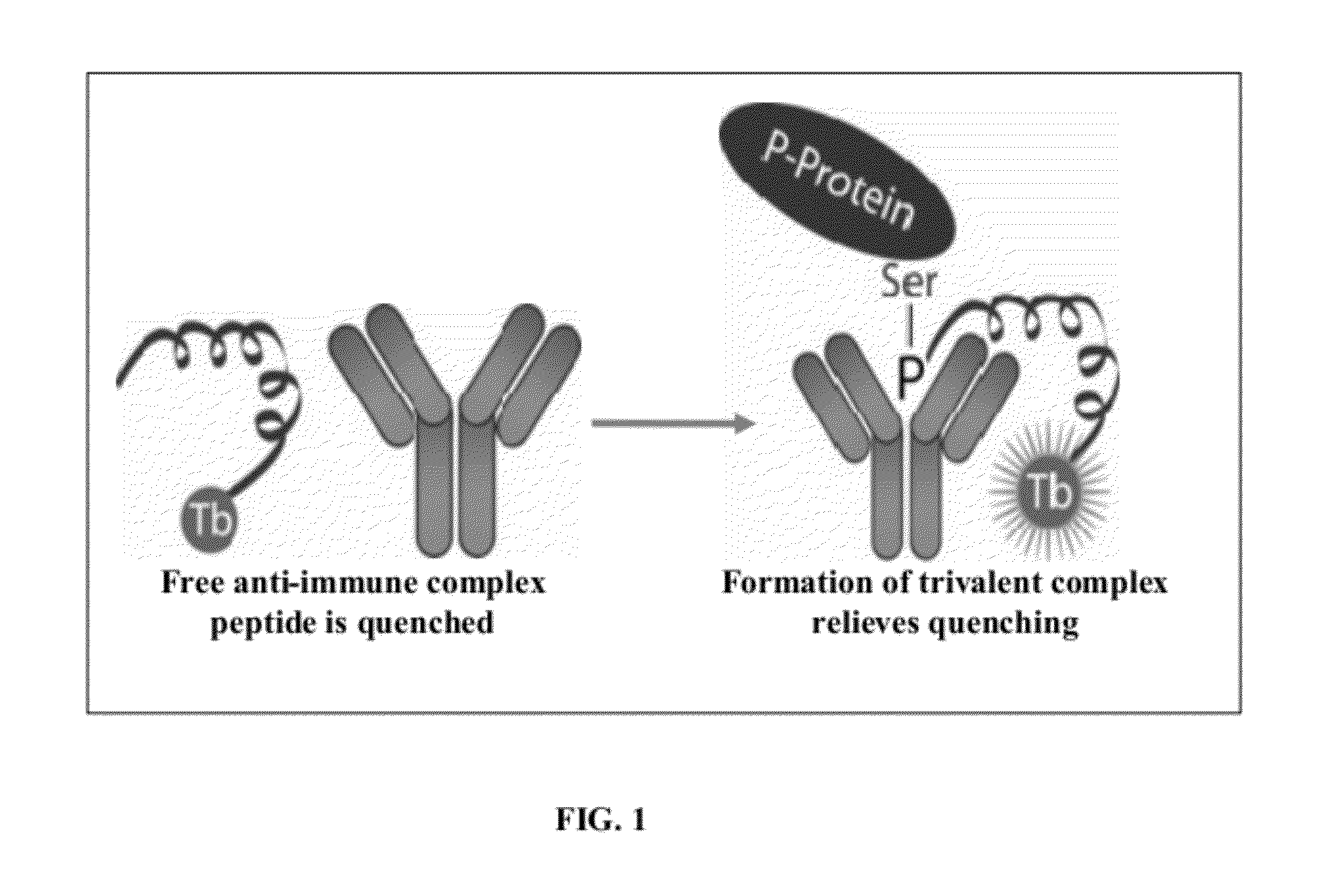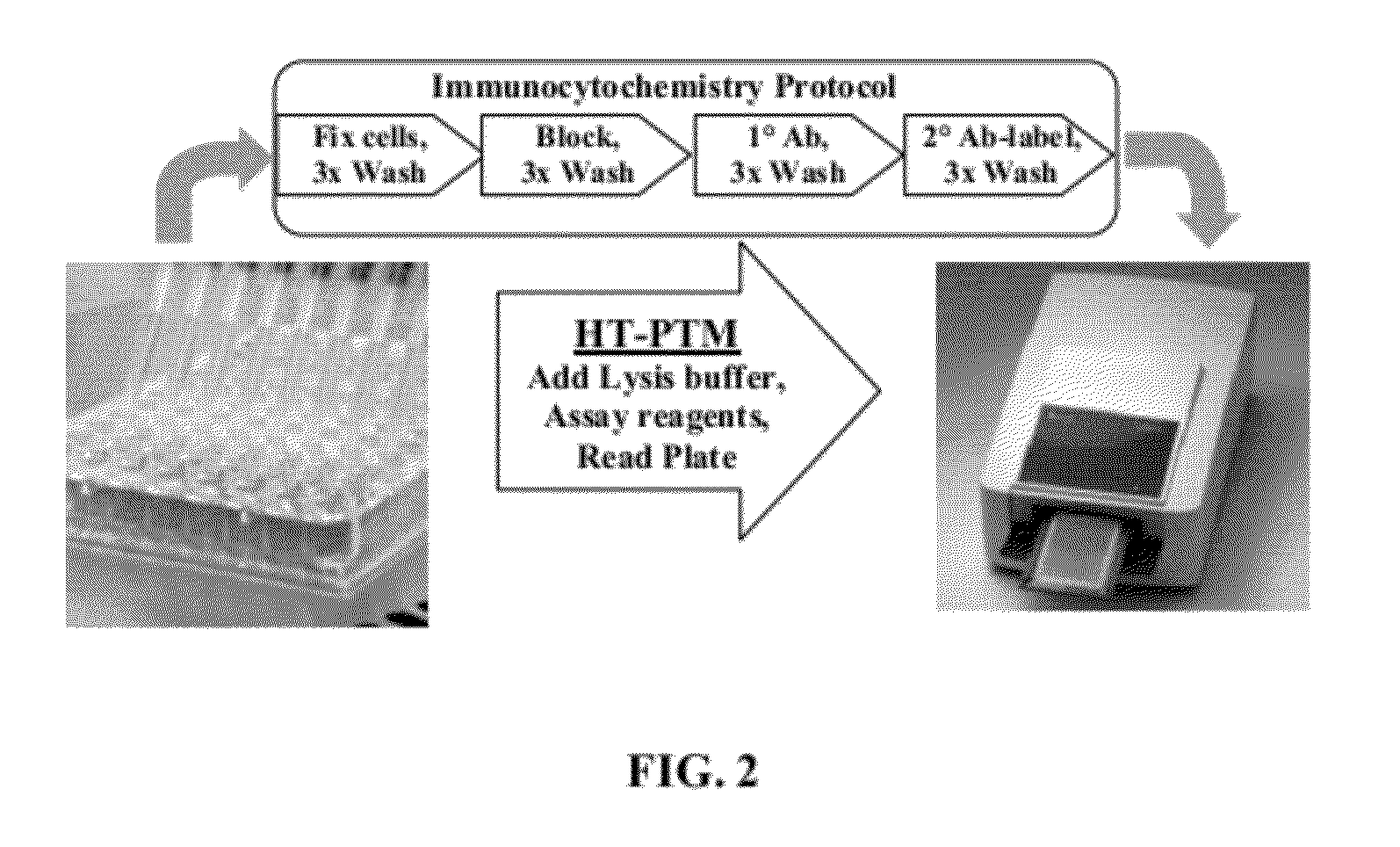Homogeneous noncompetitive detection of post translational modifications for use in high throughput assays
a technology of post translational modification and high throughput assay, which is applied in the direction of peptide/protein ingredients, peptide sources, instruments, etc., can solve the problems of difficult isolation of such anti-immune complex antibodies, and achieve significant commercial potential and improve the selectivity of specific phosphorylated sites
- Summary
- Abstract
- Description
- Claims
- Application Information
AI Technical Summary
Benefits of technology
Problems solved by technology
Method used
Image
Examples
examples
[0050]The HT-PTM assay enables the detection of a variety of post translational modifications in a homogeneous format directly from cell lysates. The HT-PTM assay enables the detection in cell lysates of phosphorylation changes and utilizes existing commercially available phosphoprotein antibodies. The HT-PTM assay also enables the detection of protein methylation sites, since methyltransferases are increasingly being targeted in oncology and technical hurdles to HTS detection of these changes are similar to those seen with phosphorylation.
[0051]The HT-PTM assay enables pharmacologic screening for kinase inhibitors in a physiological context. The HT-PTM overcomes the key technical hurdles preventing the development of HTS cellular assays for measuring specific protein phosphorylation events. Its use allows large scale screening and profiling of kinase inhibitors in the physiological context of intact cells with the most immediate effect of kinase activity as the endpoint. For exampl...
PUM
| Property | Measurement | Unit |
|---|---|---|
| Time | aaaaa | aaaaa |
| Sensitivity | aaaaa | aaaaa |
| Energy | aaaaa | aaaaa |
Abstract
Description
Claims
Application Information
 Login to View More
Login to View More - R&D
- Intellectual Property
- Life Sciences
- Materials
- Tech Scout
- Unparalleled Data Quality
- Higher Quality Content
- 60% Fewer Hallucinations
Browse by: Latest US Patents, China's latest patents, Technical Efficacy Thesaurus, Application Domain, Technology Topic, Popular Technical Reports.
© 2025 PatSnap. All rights reserved.Legal|Privacy policy|Modern Slavery Act Transparency Statement|Sitemap|About US| Contact US: help@patsnap.com


